 System Tutorial
System Tutorial
 Windows Series
Windows Series
 How to solve win11 memory leak. Analysis of the causes of win11 memory leak and various solutions.
How to solve win11 memory leak. Analysis of the causes of win11 memory leak and various solutions.
How to solve win11 memory leak. Analysis of the causes of win11 memory leak and various solutions.
php editor Xiaoxin will analyze the memory leak problem of win11 for you. Memory leaks may be caused by a variety of reasons, such as program bugs, unreleased resources, etc. Solutions include updating system patches, closing programs that may cause memory leaks, using memory management tools, etc. By analyzing the causes and taking effective measures, you can effectively solve the win11 memory leak problem and improve system performance and stability.
Causes of memory leaks:
Memory leaks are caused by misalignment of resources in computer programs due to incorrect memory allocation. This happens when unused RAM locations are still not freed. Don't confuse memory leaks with space leaks or high memory usage, which is when a program uses more RAM than it needs. The memory leak on Windows 11/10/8/7 systems allegedly occurs when the memory is unused but inaccessible.
Why memory leaks are bad:
A memory leak is bad because it is a bug, a flaw in the operating system or software. But let's see how exactly it affects the system:
- This results in memory exhaustion since the memory is not released even when it is not used.
- Exhausted memory causes software to age.
- Reduced available memory can result in increased response times and reduced system performance.
- Unchecked memory leaks may eventually cause the application to crash.
In order to identify a memory leak, a programmer needs access to the program's source code.
How to locate memory leaks
To solve a problem, we need to identify it first. The basic steps to locate a memory leak are:
- Affirmation : Determine whether a leak has occurred.
- Find kernel-mode memory leaks: Locate leaks caused by kernel-mode driver components.
- Find user-mode memory leaks: Locate leaks caused by user-mode drivers or applications.
How memory allocation happens
There are different modes for applications to allocate RAM. If space is not released after use, a memory leak can occur regardless of the allocation mode. Some common allocation patterns are:
- HealAlloc function is used for heap memory allocation. The C/C runtime equivalents are malloc and new.
- VirtualAlloc function for direct allocation from the operating system.
- Kernel32 API for saving application kernel memory. For example, CreateFile, CreateThread.
- User32 API and Gdi32 API.
How to Prevent Memory Leaks in Windows
We all know that prevention is better than cure, so it is important to monitor your system.
You need to pay attention to whether various programs and applications use RAM abnormally. You can go to Windows Task Manager by pressing CTRL SHIFT ESC and add columns for handles, user objects, GDI objects, etc.
This will help you monitor resource usage easily.
Microsoft tools to diagnose memory leaks
Various tools diagnose memory leaks in various allocation modes:
- Application Verifier diagnoses heap leaks.
- UMDH (a component of Debugging Tools for Windows) analyzes leaks in individual processes by monitoring heap memory allocations.
- Trace Capture is used to comprehensively analyze RAM usage.
- Xperf also tracks heap allocation patterns.
- CRT Debug Heap not only tracks heap allocations but also enables coding practices to minimize leaks.
- JavaScript Memory Leak Detector Debug memory leaks in your code.
Usage Tips
- Use kernel HANDLE and other smart pointers for Win32 resource and heap allocation.
- Get automatic resource management classes for kernel allocation from the ATL library. The C standard has auto_ptr for heap allocation.
- Encapsulate the COM interface pointer in a "smart pointer" with the help of _com_ptr_t or _bstr_t or _variant_t.
- Monitor .NET code for unusual memory usage.
- Avoid multiple exit paths from functions so that allocations are freed from variables in most blocks when the function ends.
- Use native exceptions only after all allocations in the _finally block are freed. Wrap all heap and handle allocations into smart pointers to use C exceptions.
- Always call the PropVariantClear function before reinitializing or discarding a PROPVARIANT object.
How to Fix Memory Leak in Windows 11/10
Just like the various ways to prevent memory leaks, there are also various ways to stop memory leaks. But before you start, remember to create a system restore point first.
1]Close the process and restart
If you see an unnecessary process taking up too much RAM, you can end the process in Task Manager. You will need to reboot the device so that the freed space can be used by other processes. The memory leak problem will not be solved without restarting. Runtime Broker is a process known to slow down your PC. See if disabling that alone works.
2]Memory Diagnostic Tool
To access the built-in Memory Diagnostic Tool for Windows:
- Save all important work.
- Press Win R to open the "Run" window.
- Type the command mdsched.exe in the "Run" window.
- Restart the computer.
- After restarting, perform a basic scan or select "advanced" options such as "Test Combination" or "Pass Count".
- Press F10 to start testing.
These are still temporary fixes.
3] Check for driver updates
Outdated drivers can cause memory leaks. Keep all drivers updated. Follow one of the following methods to update your device drivers:
- You can check for driver updates through Windows Optional Updates to update your drivers
- You can visit the manufacturer's Website to download drivers.
- Use free driver update software
- If you already have the INF driver file on your computer:
- Open Device Manager.
- Click the Driver category to expand the menu.
- Then select the relevant driver and right-click on it.
- Select Update Driver.
- Follow the on-screen wizard to complete the audio driver update.
#Updating your operating system and installed programs and Microsoft Store apps may also help.
4]Optimize performance
Tweaking Windows performance will manage everything including processor scheduling and memory usage to stop memory leaks. Follow these steps:
- Right-click "This PC" and select "Advanced" settings in the left pane.
- Under the Advanced tab, go to Performance, then Settings.
- Check "Adjust for best performance" and click "OK".
- Restart and check if the problem is resolved.
If this simple solution doesn't work, try the next solution.
5] Disable programs that run on startup
Disabling troublesome programs is the only way to get rid of memory leak problems. Go to Task Manager and disable the troublesome program. If you don't know which program is causing the problem, do the following:
- Go to Task Manager.
- Go to Startup.
- Disable startup programs that are not required to run by default.
6] Defragment your hard drive
While Windows 11/10 will do this for you automatically, you may need to occasionally defragment your hard drive to optimize performance:
- Go to This PC or My Computer.
- Right-click on the system hard drive (usually the C: drive).
- Go to Tools under Properties and select Optimize.
- Select the drive to be defragmented and select "Analyze".
Restart the computer after the new fragmentation.
7] Clear page file on shutdown
It's getting more complicated these days - but don't worry. Here's how to clear the page file every time you shut down:
- Type regedit in the search to launch the Registry Editor.
- Enter this path:
1 |
|
- Change the value of ClearPageFileAtShutDown to "1".
- Save changes and restart the device.
This should be done. Keep in mind that your shutdown process will take more time.
9]Disable Super Fetch
This Windows service optimizes performance by minimizing startup time. It lets Windows manage RAM usage. Life with Superfetch disabled is inconvenient, but do it if you must. At least try this alone to isolate the problem:
- Search for services.msc and go to Services Manager.
- Look for "Superfetch" and right-click on it to go to "Properties".
- Select "Stop".
- The service can also be "disabled" from the drop-down menu.
- Restart your PC and check if performance improves.
If this doesn't work, enable Superfetch.
10] Check for malware
Use third-party antivirus software or Microsoft Defender that comes with Windows to scan and remove malware. Make sure to update your antivirus software to support your operating system so it doesn't become the cause of memory leaks.
11] Modify settings
1. Click "Start" in the taskbar in the lower left corner, and enter "Control Panel" in the search box above to open it.
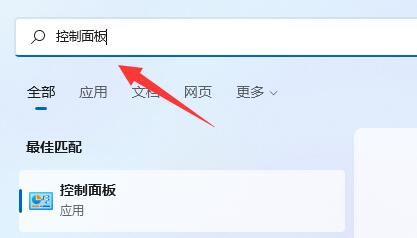
#2. After entering the new interface, switch the "View By" in the upper right corner to "Large Icons", and then click "Power Options".
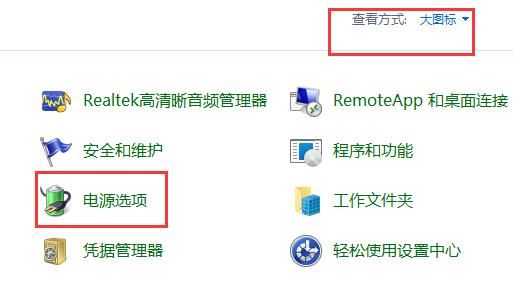
#3. Then click "Choose what the power buttons do" in the left column.
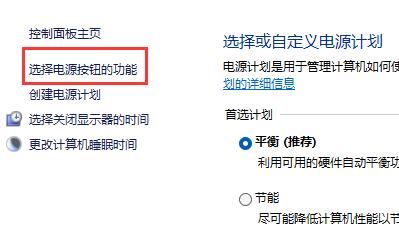
4. Then click "Change settings that are currently unavailable" in the upper box.
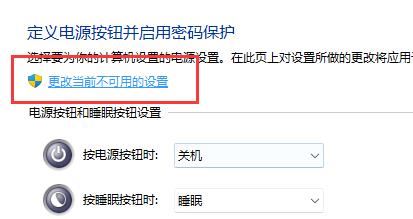
#5. Finally, find “Enable Fast Startup”, uncheck the small box, and click Save Changes.
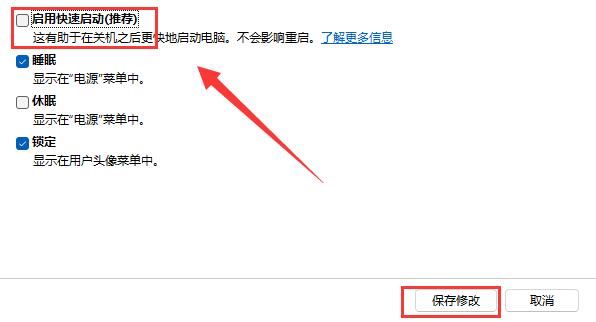
12] Modify settings
1. It may also be a memory leak caused by the graphics card driver.
2. You can choose the old version of the driver to download and install from the Intel official website.
The above is the detailed content of How to solve win11 memory leak. Analysis of the causes of win11 memory leak and various solutions.. For more information, please follow other related articles on the PHP Chinese website!

Hot AI Tools

Undresser.AI Undress
AI-powered app for creating realistic nude photos

AI Clothes Remover
Online AI tool for removing clothes from photos.

Undress AI Tool
Undress images for free

Clothoff.io
AI clothes remover

Video Face Swap
Swap faces in any video effortlessly with our completely free AI face swap tool!

Hot Article

Hot Tools

Notepad++7.3.1
Easy-to-use and free code editor

SublimeText3 Chinese version
Chinese version, very easy to use

Zend Studio 13.0.1
Powerful PHP integrated development environment

Dreamweaver CS6
Visual web development tools

SublimeText3 Mac version
God-level code editing software (SublimeText3)

Hot Topics
 1393
1393
 52
52
 1206
1206
 24
24
 Win11 24H2 will adjust security rules and NAS user access may fail
Jun 25, 2024 pm 05:23 PM
Win11 24H2 will adjust security rules and NAS user access may fail
Jun 25, 2024 pm 05:23 PM
Digital enthusiasts all know that Microsoft has released a preview version of Windows 1124H2, and the official version of Windows 1124H2 will be coming soon. This is a very important version update, and many friends are paying close attention to it. Of course, the most noteworthy thing about Windows 1124H2 is the new features and improvements in AI. It is said that Microsoft will deeply integrate Copliot. However, AI is not the subject of this article. The subject of this article is to introduce readers to two new security rule changes in the Windows 1124H2 version, which may affect some NAS users. Specifically, in the Windows 1124H2 version, Microsoft will make changes to two important network access rules:
 What should I do if the win11 dual-screen calendar does not exist on the second monitor?
Jun 12, 2024 pm 05:47 PM
What should I do if the win11 dual-screen calendar does not exist on the second monitor?
Jun 12, 2024 pm 05:47 PM
An important tool for organizing your daily work and routine in Windows 11 is the display of time and date in the taskbar. This feature is usually located in the lower right corner of the screen and gives you instant access to the time and date. By clicking this area, you can bring up your calendar, making it easier to check upcoming appointments and dates without having to open a separate app. However, if you use multiple monitors, you may run into issues with this feature. Specifically, while the clock and date appear on the taskbar on all connected monitors, the ability to click the date and time on a second monitor to display the calendar is unavailable. As of now, this feature only works on the main display - it's unlike Windows 10, where clicking on any
 Is Win11 LTSC not suitable for individual users at all? Analysis of the advantages and disadvantages of the LTSC version
Jun 25, 2024 pm 10:35 PM
Is Win11 LTSC not suitable for individual users at all? Analysis of the advantages and disadvantages of the LTSC version
Jun 25, 2024 pm 10:35 PM
Microsoft provides multiple versions of Windows systems, each targeting different usage scenarios. In addition to the Home, Professional, Education and Enterprise editions, there is also a special LTSC edition designed for the specific needs of large businesses and organizations. Although Windows 11 LTSC has become quite popular recently, it lacks commonly used functions and is not suitable for individual users. And this version has not yet been officially launched, and is expected to be released around September in the second half of 2024. Interesting thing: From Windows 1.0 to 11, the evolution of Windows versions. What is Windows 11 LTSC? Windows11LTSC is a feature of Windows11 operating system
 System Restore prompts that you must enable system protection on this drive
Jun 19, 2024 pm 12:23 PM
System Restore prompts that you must enable system protection on this drive
Jun 19, 2024 pm 12:23 PM
The computer has a restore point, and when the system is restored, it prompts "You must enable system protection on this drive." This usually means that the system protection function is not turned on. System protection is a feature provided by the Windows operating system that can create system restore points to back up system files and settings. That way, if something goes wrong, you can revert to a previous state. When the system fails and you cannot enter the desktop to start it, you can only try the following method: Troubleshooting-Advanced Options-Command Prompt Command 1 netstartvssrstrui.exe/offline:C:\windows=active Command 2 cd%windir%\system32 \configrenSYSTEMsy
 Is win11 24h2 worth installing? Comparison of the differences between Win11 24H2 and 23H2
Jun 11, 2024 pm 03:17 PM
Is win11 24h2 worth installing? Comparison of the differences between Win11 24H2 and 23H2
Jun 11, 2024 pm 03:17 PM
The win1124h2 version is a version that many users are looking forward to. Now that the small update of Win1124H2 has been completed, it will welcome a larger Moment update. However, many users are asking whether win1124h2 is easy to use? What is the difference between Win1124H2 and 23H2? Let this site carefully introduce to users the differences between Win1124H2 and 23H2. What is the difference between Win1124H2 and 23H2? The Windows 1124H2 update brings many adjustments and new features to the Settings application, and accelerates the migration of Control Panel-related functions/features. Improved accessibility Windows 1124H2 includes several accessibility improvements: including color filters
 What should I do if my win11 wallpaper is locked and cannot be changed? What to do if my computer wallpaper is locked and cannot be changed?
Jun 09, 2024 pm 08:58 PM
What should I do if my win11 wallpaper is locked and cannot be changed? What to do if my computer wallpaper is locked and cannot be changed?
Jun 09, 2024 pm 08:58 PM
What should I do if my win11 wallpaper is locked and cannot be changed? Users can directly click on this computer, then click on the search box and directly enter %ProgramData%MicrosoftWindows to perform the operation. Now, let this website give users a detailed introduction to the detailed explanation of Win11 wallpaper being locked and unable to be changed. The win11 wallpaper is locked and cannot be changed. Detailed explanation method one: 1. Double-click the mouse to enter [This PC]. 2. After entering, enter a string of codes like [%ProgramData%MicrosoftWindows] in the search box at the top of the page, and then click Enter. 3. Then find [systemdata] in the folder below and click in
 Quick solution to the unresponsiveness of clicking desktop icons in Windows 11
Jun 05, 2024 pm 01:03 PM
Quick solution to the unresponsiveness of clicking desktop icons in Windows 11
Jun 05, 2024 pm 01:03 PM
Nowadays, more and more people are using the win11 system. This system will inevitably have some problems. Recently, many users have encountered the problem of no response when clicking desktop icons in win11. Let’s take a look at the specific solutions! Method 1 1. On the Windows 10 desktop, we right-click the Start button in the lower left corner, and then select the "Run" menu item in the pop-up menu. 2. The Windows 10 run window will open, enter the command regedit in the window, and then click the OK button. 3. The Registry Editor window will open. In the window, we locate Computer\HKEY_CURRENT_USER\Software\Microsoft\Windows\
 Several most effective solutions to the most effective solutions for win11 systems that often jump back to the desktop for no reason
Jun 05, 2024 pm 04:45 PM
Several most effective solutions to the most effective solutions for win11 systems that often jump back to the desktop for no reason
Jun 05, 2024 pm 04:45 PM
Some background programs may pop you out of the current app while trying to gain focus. This is usually caused by some applications that need to be updated regularly or prompt information. There are some other reasons. So how to solve it? Let’s take a look below! 1. Check background programs and use the Ctrl+Shift+Esc shortcut keys to immediately open the Task Manager. Carefully review the list of currently running applications and background processes, focusing on programs that are not system processes and are unfamiliar to you. If you find any suspicious or unwanted program, right-click on it and select "End Task" to close the program. 2. Perform a system update check and install all available updates, including driver and system security updates. By clicking the Start button and then selecting the Settings icon (



